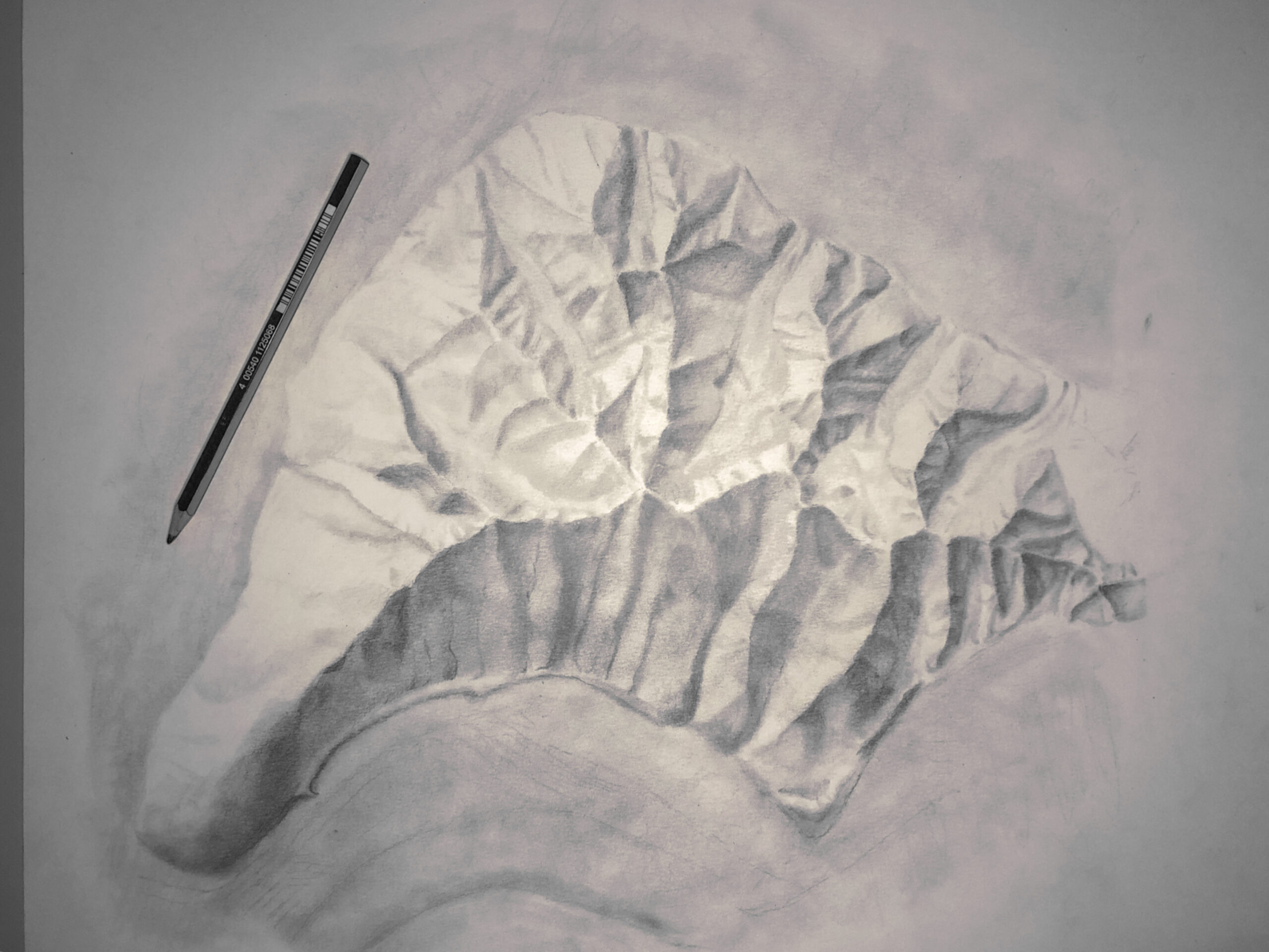
Drawing Hillshade by Hand with Pencils. A tutorial (with time-lapse videos)
Learn how to hand draw beautiful shaded relief hillshades in this 6-step tutorial.

Animated Flyover Map in ArcGIS Pro and Adobe After Effects
Building maps often requires multiple software applications. In fact, I cannot recall a map that I’ve made in the last...
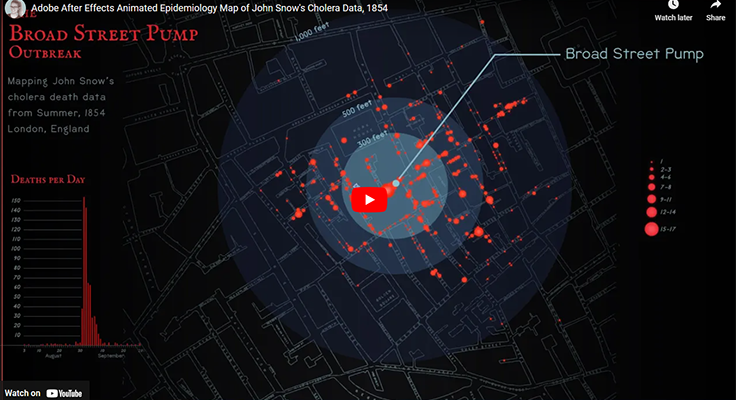
Reimagining the John Snow Cholera Map with Animation
Last week marked Esri’s annual User Conference in San Diego, and what a conference it was! It’s always fun to...

3D Shading & Rendering in Illustrator: A Globe
In a few quick steps, you can give a circle-shaped vector path a 3D-rendered appearance in Adobe Illustrator. I’m a...

The High Alpine typeface is available now!
High Alpine Semibold has an unapologetically high ascender with no accompanying adjustment to the x-height. The descender was kept rather short as well, allowing uppercase to maintain its towering command. For moments when you designers feel like reaching ultimate heights, I've added many alternative characters; uppercase crossbarred characters have alternatives with daringly high crossbars, and stemmed lowercase characters have longer-stemmed alternatives. Many further glyphs are included with this font to accommodate multiple languages.
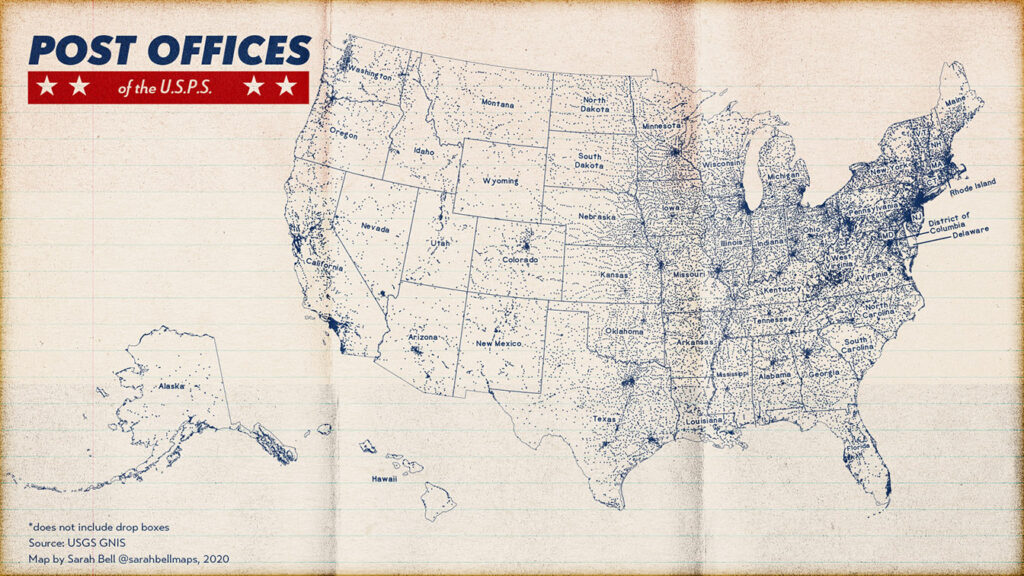
A Glimpse of the USPS Landscape with Maps
By the time I publish this, I will have just finished presenting at the 40th annual North American Cartographic Information...
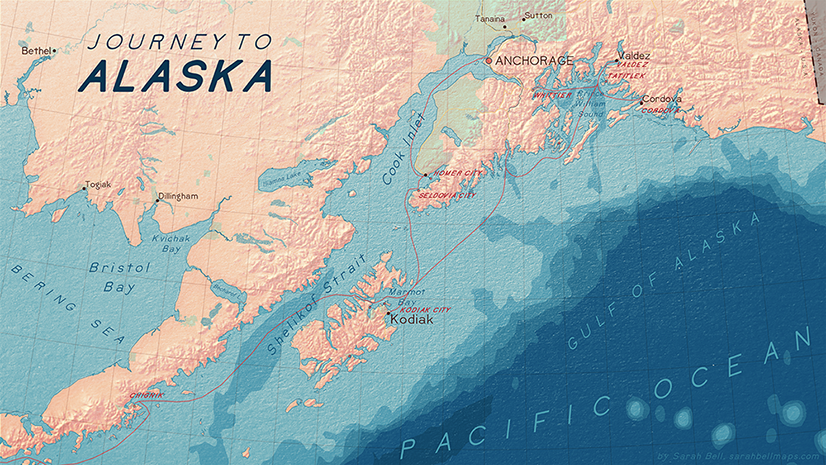
The Font is Ready! BellTopo Sans Fonts Design Complete
About the BellTopo Sans Font I designed the BellTopo Sans font, originally inspired by the typefaces on the antique U.S.G.S....
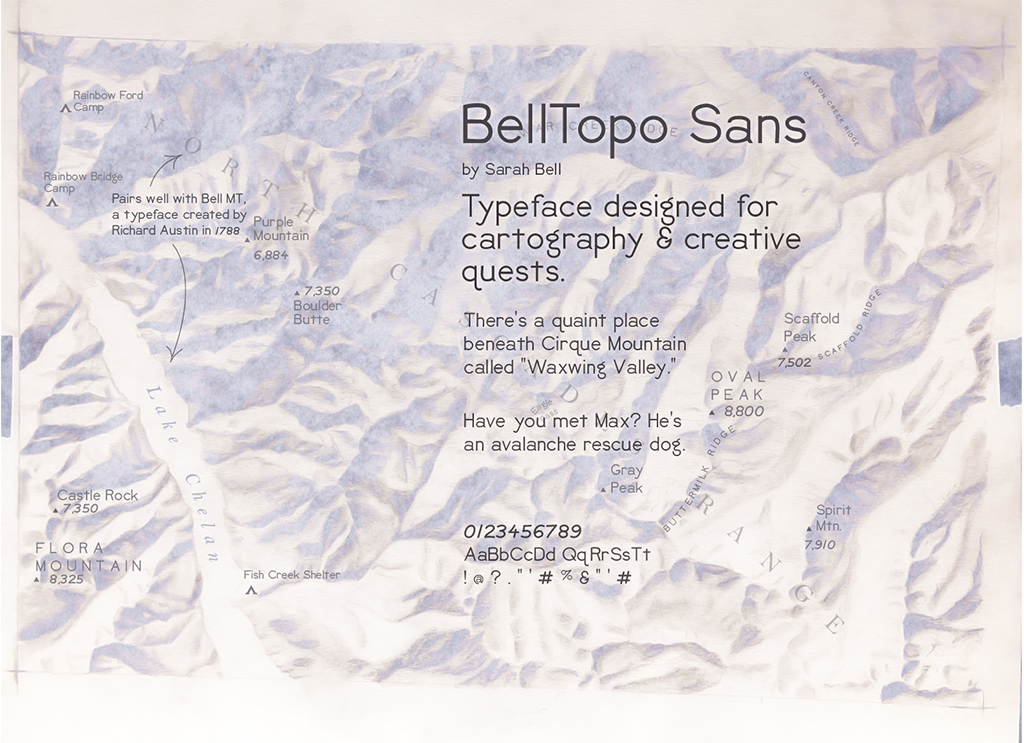
Typography for Topography: BellTopo Sans Typeface & Free Font
While making my own USGS-inspired maps, my search never returned the exact type of font I was looking for. The fruitless search was serendipitous however, because it provided the push to make my own. It was designed for map labels that are no larger than 80-100pt, but usually much smaller. I decided to name it BellTopo Sans with the plan to create a serif version.
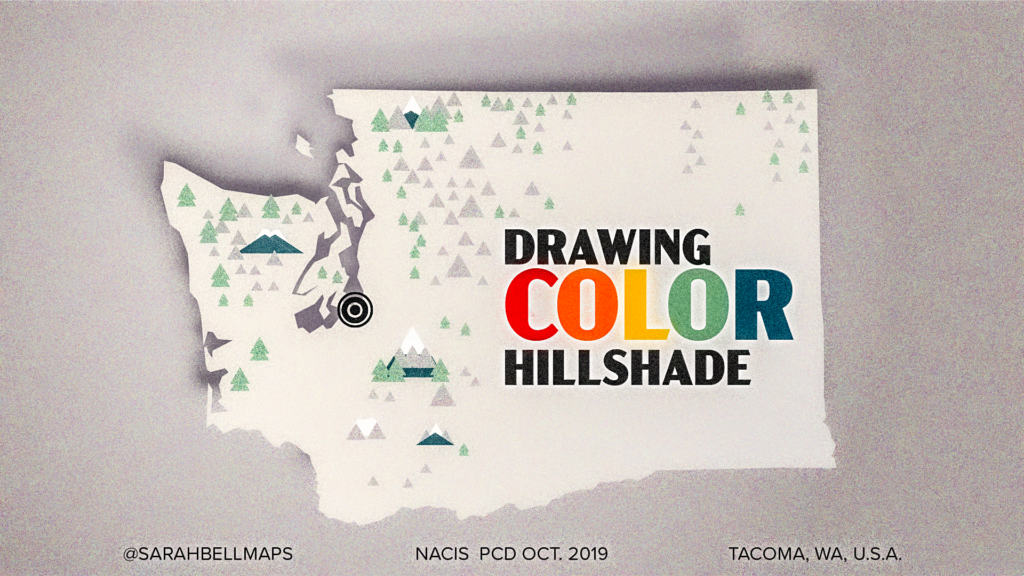
Video is up! Colored Pencil Hillshade
The North American Cartographic Information Society (NACIS) holds a marvelous annual conference, and this year’s was in Tacoma, Washington just...

Adobe MAX 2019: Mapping
By the time you are reading this, my colleague John Nelson and I will have presented to a bunch of...